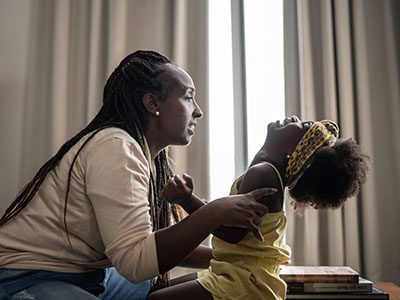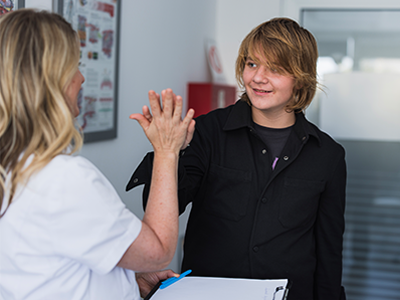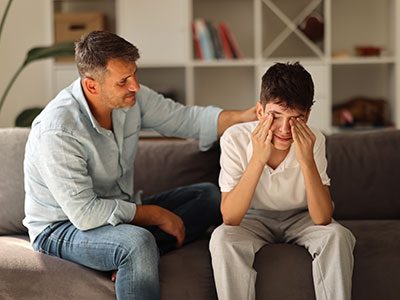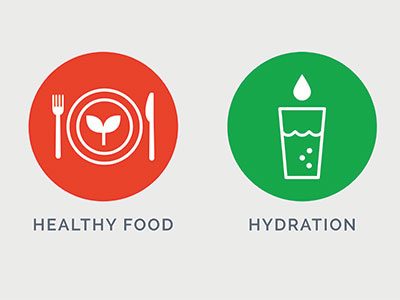It is important for teens to have a basic understanding of contraception options even though they may not be contemplating sexual activity. Some contraceptive methods may also have other benefits such as regulating heavy periods, acne or pain with periods. In most cases, a teen will need to see a health provider to discuss the best method for them, risk factors and possible side effects before they start taking contraception. Every method of birth control has pros and cons, and it is important to have a personalized discussion with a healthcare provider to determine what is best for your teen based on cost, effectiveness and intended use.
Keep in mind that this list of options does not offer protection against sexually transmitted infections (STIs) and that each method should be used with a condom to prevent infections. Depending on where you live, parents may need to go with their adolescents to start them on contraception, so it’s important to be aware of the various options for your teen.
Condoms
When used correctly, condoms are very effective at preventing pregnancy and STIs. For added protection, it’s wise to use condoms along with another method of birth control, like birth control pills or an IUD.
Combined oral contraceptive pills (birth control)
Combined oral contraceptive pills are highly effective at preventing pregnancy if taken daily. Other benefits include less acne and menstrual pain. They are also cost-effective. However, there may be estrogen related side-effects such as nausea and in rare cases blood clots. When using, it is best not to miss more than 1-2 days in a row.
Birth control patch
The birth control patch sticks to the skin and releases estrogen and progestin into the bloodstream. A new patch is applied once a week for three weeks, followed by one week off. The patch has similar side effects and benefits as oral contraceptive pills but does not require daily consumption. If your teen struggles with remembering to take a daily pill, this could be a fitting alternative.
Vaginal ring
The vaginal ring is similar to a patch in terms of hormonal effects. The ring is placed in the vagina for three weeks continuously followed by one week off.
Depo-Provera
Depo-Provera is a well-known brand name for a contraceptive injection of the hormone progestin. The injection requires an office visit every three months. It is highly effective at preventing pregnancy but can be associated with menstrual irregularities.
Emergency contraception
Emergency contraception is a safe and effective backup method to prevent pregnancies following unprotected sex. It can also be used in the event of a sexual assault. The contraception can be used up to five days after unprotected sex although it is best to use within 72 hours of unprotected sexual activity. The main side effect is nausea.
In addition to these methods, it is important to consider and encourage longer term prevention methods, known as LARC, to ensure maximum protection. LARC, or Long-Acting Reversible Contraception, refers to birth control methods that can last for long periods of time, but can also be reversed if desired. The most common LARC methods include the intrauterine device (IUD) or the implant.
Intrauterine device (IUD)
The intrauterine device is a small t-shaped piece of plastic that goes into the uterus. It lasts for three to 12 years depending on the type and is increasingly popular among adolescent females because of ease of use. IUDs need to be inserted and removed by a provider but are a very effective form of protection with a low failure rate.
Implant
The implant is a thin rod with progestin that can be placed in the arm by a provider and gives pregnancy prevention for up to three years. The most common brand of the implant is Nexplanon.
Where to go for contraception
Young people often want to know where to go for screening and STI testing and at what age they can go without a parent. In fact, one of the biggest barriers to care for teens, and a reason for delay in treatment, is their concern about discussing these issues with an adult or parent and finding appropriate, teen-friendly health services.
I encourage parents, caregivers and educators to find out about the resources and rules in their community and to talk to teens about where they can go. Also, it is important to ensure that teens have a parent or trusted adult they can go to with questions or concerns about an STI. The best way to avoid STIs is to use condoms or other barrier methods and have a long-term monogamous relationship (or abstain altogether). Starting these conversations with your child and healthcare provider early can help keep an honest conversation about your child’s reproductive health as they grow and mature into young adults.
 https://riseandshine.childrensnational.org/wp-content/uploads/2025/05/child-having-tantrum-feature.jpg
300
400
webteam
https://riseandshine.childrensnational.org/wp-content/uploads/2017/11/childrens_riseandshine_logo.jpg
webteam2025-05-07 15:54:412025-05-07 16:19:29Helping autistic children manage big feelings
https://riseandshine.childrensnational.org/wp-content/uploads/2025/05/child-having-tantrum-feature.jpg
300
400
webteam
https://riseandshine.childrensnational.org/wp-content/uploads/2017/11/childrens_riseandshine_logo.jpg
webteam2025-05-07 15:54:412025-05-07 16:19:29Helping autistic children manage big feelings





















Leave a Comment
Want to join the discussion?Feel free to contribute!